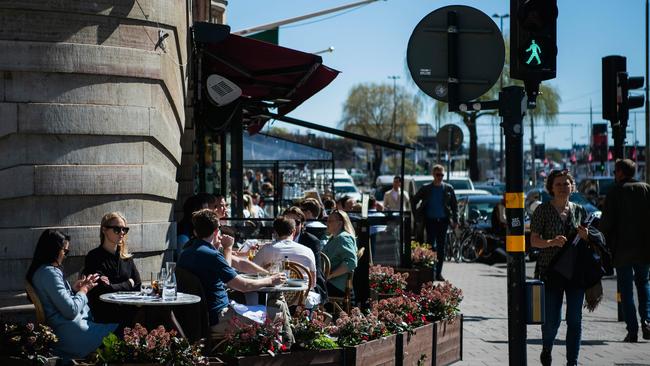Coronavirus: Do lockdowns save many lives? In most places, the data says no
The speed with which officials shuttered the economy appears not to be a factor in COVID-19 deaths. Just take a look at Sweden.

Do quick shutdowns work to fight the spread of COVID-19? Joe Malchow, Yinon Weiss and I wanted to find out. We set out to quantify how many deaths were caused by delayed shutdown orders on a state-by-state basis.
To normalise for an unambiguous comparison of deaths between states at the midpoint of an epidemic, we counted deaths per million population for a fixed 21-day period, measured from when the death rate first hit 1 per million — e.g.,‒three deaths in Iowa or 19 in New York State. A state’s “days to shutdown” was the time after a state crossed the 1 per million threshold until it ordered businesses shut down.
We ran a simple one-variable correlation of deaths per million and days to shutdown, which ranged from minus-10 days (some states shut down before any sign of COVID-19) to 35 days for South Dakota, one of seven states with limited or no shutdown. The correlation coefficient was 5.5 per cent — so low that the engineers I used to employ would have summarised it as “no correlation” and moved on to find the real cause of the problem. (The trendline sloped downward — states that delayed more tended to have lower death rates — but that’s also a meaningless result due to the low correlation coefficient.)
No conclusions can be drawn about the states that sheltered quickly, because their death rates ran the full gamut, from 20 per million in Oregon to 360 in New York. This wide variation means that other variables — like population density or subway use — were more important. Our correlation coefficient for per-capita death rates vs. the population density was 44 per cent. That suggests New York City might have benefited from its shutdown — but blindly copying New York’s policies in places with low COVID-19 death rates, such as my native Wisconsin, doesn’t make sense.
Sweden is fighting coronavirus with commonsense guidelines that are much less economically destructive than the lockdowns in most US states. Since people over 65 account for about 80 per cent of COVID-19 deaths, Sweden asked only seniors to shelter in place rather than shutting down the rest of the country; and since Sweden had no paediatric deaths, it didn’t shut down elementary and middle schools. Sweden’s containment measures are less onerous than America’s, so it can keep them in place longer to prevent COVID-19 from recurring. Sweden did not shut down stores, restaurants and most businesses, but did shut down the Volvo automotive plant, which has since reopened, while the Tesla plant in Fremont, California, was shuttered by police and remains closed.
How did the Swedes do? They suffered 80 deaths per million 21 days after crossing the 1 per million threshold level. With 10 million people, Sweden’s death rate ‒ without a shutdown and massive unemployment ‒ is lower than that of the seven hardest-hit US states — Massachusetts, Rhode Island, Louisiana, Connecticut, Michigan, New Jersey and New York — all of which, except Louisiana, shut down in three days or less. Despite stories about high death rates, Sweden’s is in the middle of the pack in Europe, comparable to France; better than Italy, Spain and the UK; and worse than Finland, Denmark and Norway. Older people in care homes accounted for half of Sweden’s deaths.
We should cheer for Sweden to succeed, not ghoulishly bash them. They may prove that many aspects of the US shutdown were mistakes — ineffective but economically devastating — and point the way to correcting them.
Wall Street Journal







To join the conversation, please log in. Don't have an account? Register
Join the conversation, you are commenting as Logout